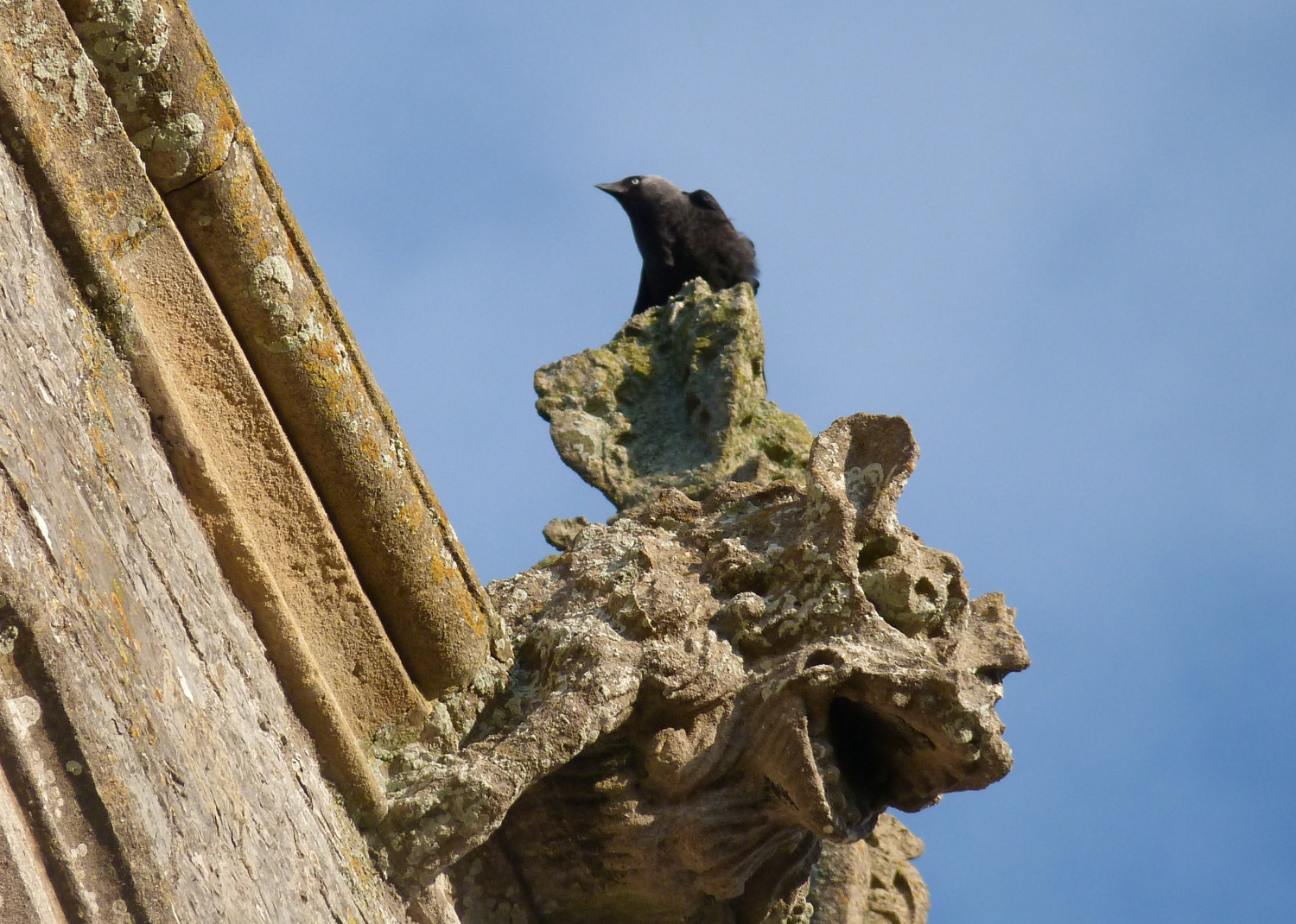
Jackdaw perching on tower grotesque
Birdwatching requires patience. If birds turned up to order it would be a boring activity. The excitement lies in the unpredictability of their behaviour, and seeing the unexpected. Despite this there are certain things that you can do to enrich your experience of bird watching. The first tip is to be prepared. You can watch birds with the unaided eye but it helps to have a pair of binoculars ready to use when you are out walking. The second tip is to learn a little about the birds you might see, the basic identifying features of a particular species, and their calls and song. The third tip is to go at the best time to see birds, which is usually in the early morning or evening, and to approach the churchyard slowly and carefully so that you don’t disturb birds that are feeding. Finally wait patiently and quietly to see what turns up.
It is unlikely that you will see any rare birds in our churchyard, but there is usually something rewarding on a visit at most times of the year. Starting in January when there are no leaves on the trees, and birds are easier to see, you can see most of the local breeding birds. Chaffinches feed under the beech tree, goldfinches flock around the trees above the war memorial and all the common tit species visit regularly. If you are lucky you will see a family of long tailed tits as they flit from branch to branch searching for small insect material and emitting their high pitched notes as they go. Until the end of winter redwings and fieldfares frequent the trees surrounding the church.
As the days draw longer you might hear a greenfinch “wheezing” its brief song from a high perch. Our second smallest bird, the wren, may burst into its unmistakable explosive trilling song, and the goldcrest, our smallest bird, can be heard through it high pitched and continuous song. Actually seeing it is much more difficult because goldcrests spend most of their time flitting about in conifers, making them very difficult to spot and identify with certainty.
In March chiff chaffs are the first summer visitors to arrive. When you hear the monotonous two note song look carefully and you will see a small bird up in the branches of our churchyard trees. All the local breeding birds sing in April and May but you have to get up early to hear them at their best. By early May our swallows arrive and nest in the south porch. They usually raise two broods before leaving their nest site in August.
The three most colourful birds that visit the churchyard are the greater spotted woodpecker, that starts drumming in late February, the green woodpecker that loves to forage for ants in the south churchyard and the jay that visits in the autumn to harvest acorns.
Finally, birds of prey and birds of the crow family may be seen at any time of the year. If you find a pile of feathers it will almost certainly be from a pigeon that has been caught by a sparrowhawk. Kestrels will hover above rough grassland looking for small voles and mice. In spring buzzards soar above the Knoll and are often mobbed by ravens. Jackdaws are always circling and alighting on the church tower. In winter they mix with rooks and crows in the late afternoon making a raucous cacophony of sound before they fly off to roost around Ball Copse Hall.
Click here for some illustrations of our local birds.